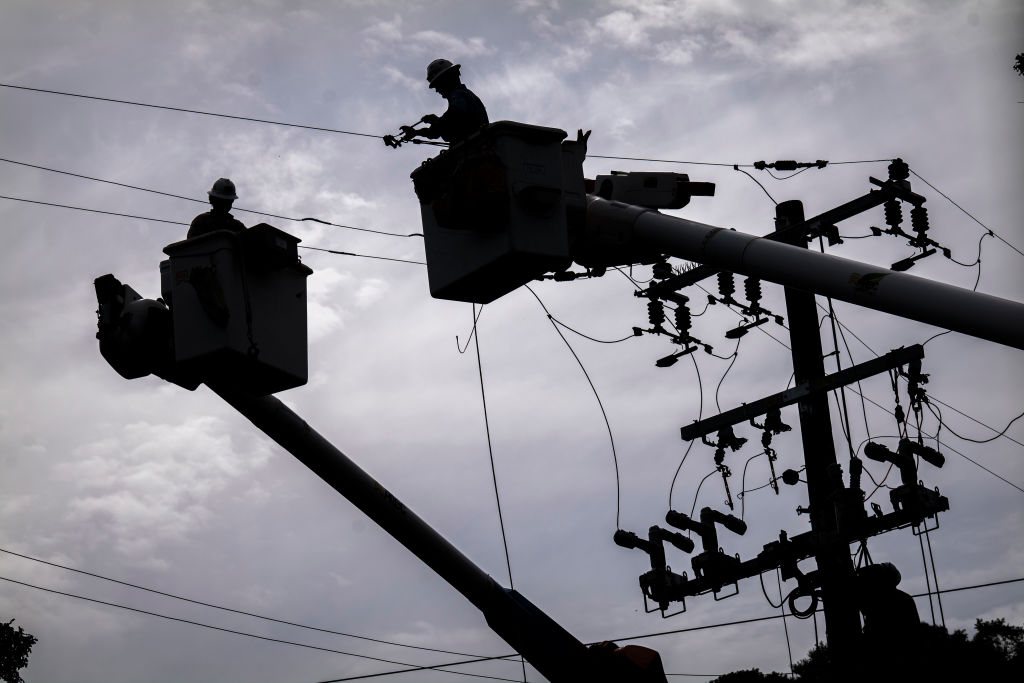
Trump’s Rage over Abrego Garcia Case Darkens as Crushing New Polls Hit
April 28, 2025
Donald Trump Is Enjoying This
April 28, 2025Washington’s latest export restrictions on Nvidia’s H20 chips are likely to accelerate China’s shift toward domestic alternatives, as homegrown firms strive to close the gap with global rivals.
Years of controls on U.S. chips have pushed the Chinese government to invest billions in its domestic supply chain for semiconductors that are key to the development of artificial intelligence.
“China’s progress is being slowed down by chip-related controls, but it is hard to imagine a situation where you can stop them forever,” Ray Wang, a semiconductor analyst based in Washington, D.C., told Rest of World.
China has advanced more in some areas — such as memory chips and design — than others, while struggling with equipment making, he said.
Nvidia CEO Jensen Huang made a surprise visit to Beijing days after the U.S. announced new restrictions on the most advanced AI chip it was previously allowed to sell in China. Huang told officials he hoped to “continue to cooperate with China.”
Here’s how five major Chinese semiconductor companies compare to the global leaders:
1. Chip design
HiSilicon vs. Nvidia
HiSilicon, HuaweiHuaweiHuawei is a Chinese technology company focused on mobile phones and telecommunications, and is seen as a poster child for China’s global tech ambitions.READ MORE’s chip design arm, produces the Ascend chip series, one of the most advanced and widely used in China. Recent advances have helped HiSilicon meet domestic demand for high-performing chips, and power a range of AI-enhanced smartphones.
In terms of computing power, Huawei claimed last year that its 910B AI chip beat Nvidia’s A100 chip — which has been restricted by the U.S. — in some tests. An analysis from the Center for Security and Emerging Technology at Georgetown University called them “roughly comparable,” while noting that multiple U.S. chip firms produce chips that surpass any Huawei Ascend chip.
2. Chip production
SMIC vs. TSMC
China’s top chips foundry, Semiconductor Manufacturing International Corporation, produces chips for design companies. U.S. rules bar Chinese firms from buying chips measuring less than 14 nanometres, whose smaller nodes make them more efficient.
SMIC is capable of producing a 7nm chip, according to analysis from Canadian research firm TechInsight. Reports say SMIC and Huawei are on the cusp of producing a 5nm next-generation chip.
Meanwhile, global leader Taiwan Semiconductor Manufacturing Company recently announced that its 2nm chip is on track for mass production later this year.
SMIC significantly lags behind TSMC in productivity because the former’s machines are calibrated for older chips. SMIC appears capable of producing 5nm advanced chips, but at a higher cost, a former TSMC executive has said.
3. Flash memory
YMTC vs. Samsung
Yangtze Memory Technologies Corp. is China’s leader in 3D NAND flash memory chips that can store data without a continuous power source.
Samsung is the world’s biggest flash memory chipmaker with its popular 286-layer V9 NAND chip — more layers mean higher-density storage capacity. It has also developed a new 400-layer chip, while rival SK Hynix — also from South Korea — is producing a 321-layer product.
YMTC has produced a 294-layer NAND, an upgrade from its 232-layer product, a TechInsights analysis found.
4. Lithography
SMEE vs. ASML
Shanghai Micro Electronics Equipment is the only lithography equipment maker in China. Lithography is one of the biggest choke points in China’s supply chain, according to a report from the Center for Security and Emerging Technology. The intricate technology uses wavelength light to print circuit patterns onto silicon wafers, enabling chips to be smaller in size but more powerful.
Dutch firm ASML is the only company in the world that makes extreme ultraviolet (EUV) machines, which are needed for producing advanced chips smaller than 7nm. Washington has blocked ASML from shipping to China since 2019.
China’s progress in developing lithography systems is unclear. SMEE sells machines that can make 90nm chips, and is reportedly developing machines with 28nm capability. But SMEE’s current output is still 15 to 20 years behind ASML, a Chinese investment company report said.
5. Chip etching
AMEC vs. Lam Research
Advanced Micro-Fabrication Equipment produces chip-making equipment and leads in etching — a process that removes unwanted materials to carve patterns on chip wafers.
U.S.-based Lam Research, used by TSMC, Intel, and Samsung, leads global sales of etch equipment manufacturing.
A majority of AMEC’s tools are locally sourced, its CEO Gerald Yin said last year, predicting that China can rival the top players in another five to 10 years.
#Chinas #chipmakers #catching #Nvidia #TSMC #Heres #compare
Thanks to the Team @ Rest of World – Source link & Great Job Kinling Lo





